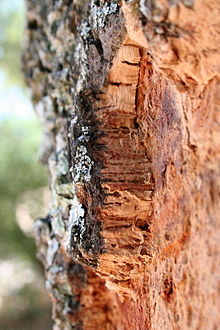Portuguese Cork
Sources
There are about 2,200,000 hectares of cork forest worldwide; 34% in Portugal and 27% in Spain. Annual production is about 200,000 tons; 49.6% from Portugal, 30.5% from Spain, 5.8% from Morocco, 4.9% from Algeria, 3.5% from Tunisia, 3.1% Italy, and 2.6% from France.
Once the trees are about 25 years old the cork is traditionally stripped from the trunks every nine years, with the first two harvests generally producing lower quality cork. The trees live for about 300 years.
The cork industry is generally regarded as environmentally friendly. Cork production is generally considered sustainable because the cork tree is not cut down to obtain cork; only the bark is stripped to harvest the cork. The tree continues to live and grow.
The sustainability of production and the easy recycling of cork products and by-products are two of its most distinctive aspects. Cork Oak forests also prevent desertification and are a particular habitat in the Iberian Peninsula and the refuge of various endangered species.
Properties and uses
Cork's bubble-form structure and natural fire retardant make it suitable for acoustic and thermal insulation in house walls, floors, ceilings and facades. The by-product of more lucrative stopper production, corkboard is gaining popularity as a non-allergenic, easy-to-handle and safe alternative to petrochemical-based insulation products.


